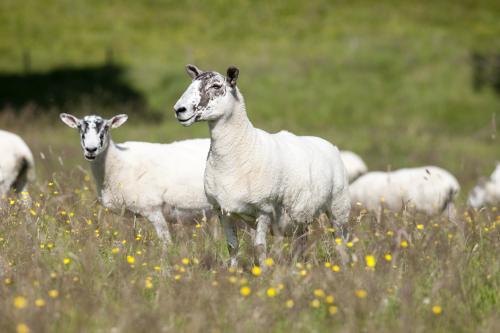This workshop aims to produce industry guidelines on management control approaches for ticks and TBDs, represents a crucial step towards addressing a pressing challenge facing livestock and public health in Scotland and the UK.
Understanding the Challenge
The main workshop aim is to address the different challenges posed by ticks and TBDs. Factors such as changes in wildlife distribution, agricultural practices, and human activities contribute to their spread. Traditional control methods, mainly relying on acaricides, have shown limitations, and new practices like acaricide rotation and biological control agents, should be considered as complementary approaches. However, different priorities among farming communities, industry, public health bodies, government and conservationists have, until now, prevented the identification of opportunities towards common goals.
A collaborative approach
Recognising the complexity of the issue, the workshop aims to promote a collaborative approach involving stakeholders from diverse sectors. By bringing together experts from academia, industry, public health, wildlife and game management, and more, the workshop seeks to build a coordinated network to tackle tick and TBD challenges comprehensively. The workshop will be a multi-sector event, and has been organised by a collaboration between Moredun Research Institute (Mara Rocchi and Beth Wells), Biomathematics and Statistic Scotland (BioSS, David Ewing), Scottish Rural College Veterinary Services (Helen Carty) and the University of Glasgow (Lucy Gilbert) with the support of Moredun Foundation and SEFARI Gateway.
Workshop Objectives
The workshop has clear objectives:
- network building by bringing together stakeholders and experts to form a collaborative network
- identifying Interventions by assessing available interventions and integrated management approaches to establish best practices
- knowledge dissemination by providing publishable outputs to showcase support and influence policy development
- and the production of an action plan to draw a roadmap for implementing effective tick management strategies with defined roles and responsibilities.
Workshop framework
The one-day workshop will be held at the home of the Moredun Research Institute (Pentlands Science Park), near Edinburgh, on the 6th of September 2024. The workshop, facilitated by experienced professionals, will be structured around interdisciplinary working groups focusing on key areas such as landscape management, disease diagnosis, acaricide use, public health and communication strategies. Invited stakeholders includes Scottish Government policy colleagues, pharmaceuticals industry representatives, academics and researchers, and traditionally less represented participants such as land/moor managers, conservation organisation and game estates. Through facilitated discussions, participants will brainstorm solutions, assess their effectiveness, and develop workable strategies.
Post-Workshop Activities
We are aiming to extend the impact of the workshop beyond its duration. Follow-up activities will include participant surveys, a workshop report, policy recommendations, and the establishment of collaborative networks and specialist advisory groups. These efforts aim to sustain momentum, foster ongoing information sharing, and pave the way for future research and innovation in tick control and management.
Conclusion
By fostering collaboration, sharing knowledge, and developing workable strategies, this initiative seeks to mitigate the impact of ticks and TBDs, safeguarding animal welfare and supporting local economies.
For more information contact Mara Rocchi (mara.rocchi@moredun.ac.uk) or Beth Wells (Beth.wells@moredun.ac.uk) and find out more about Ticks & Tickborne Diseases here.
Written by Mara Rocchi
